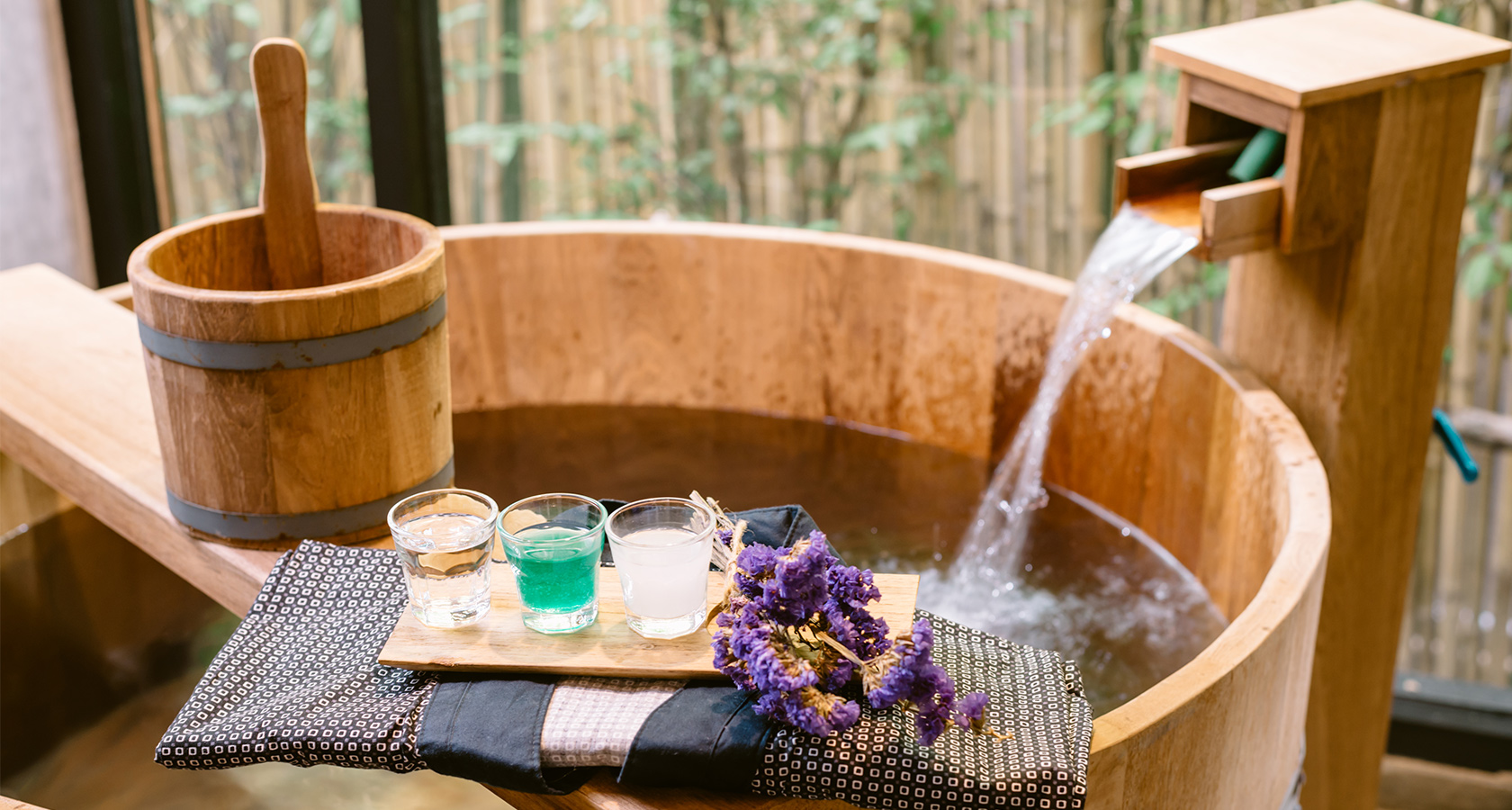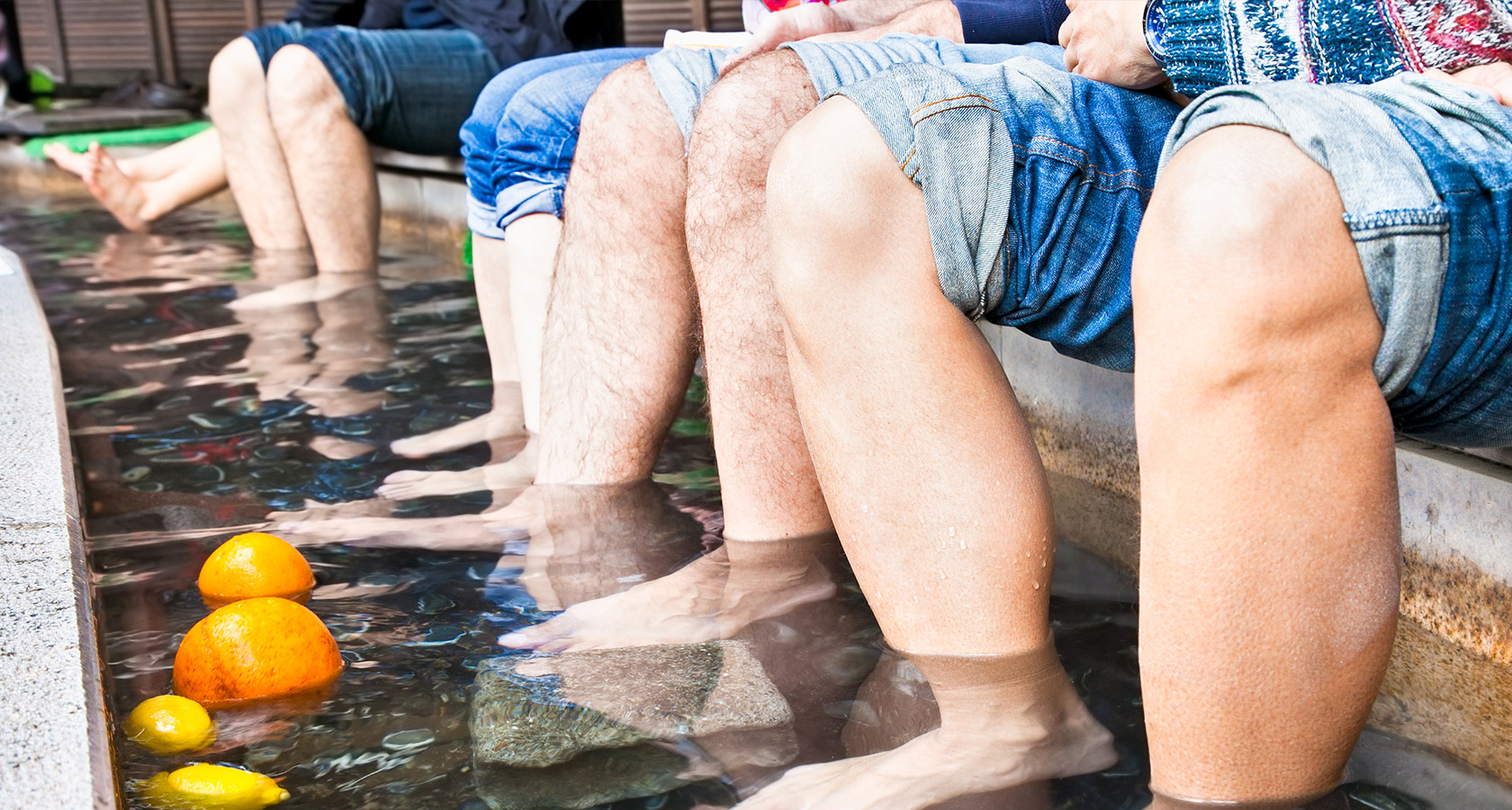
With 110 active volcanoes in Japan, the country is one of the most geologically active inhabited areas on the planet. It sits on multiple tectonic fault lines, the longest of which, the Japan Media Tectonic Line, spans almost the entire length of the country like a spine.
Unfortunately, this means the country experiences a high number of natural disasters like earthquakes and tsunamis.
Although these fault lines are the source of unwanted pains, they are also the source the natural hot springs, otherwise known as onsen, that are enjoyed by millions of locals and tourists annually.
Onsen are the selling point for many traditional Japanese Inns or ryokan, and people will plan their vacation around a good soak. It is seen as the perfect way to unwind and relax, and many onsen claim to have medicinal benefits. Some regions even state that the unique blend of natural minerals in their spring water can bring about benefits ranging from easing tired joints to ensuring longevity.

When visiting a public bath in Japan, there are two categories – it is sometimes difficult to differentiate between them. Onsen are baths filled with naturally hot spring water, while Sento are public baths that are filled with heated water. Sento do not carry the same health benefits claimed by onsen and are usually much cheaper and a little less decadent. But no matter which type of bathhouse you choose to visit, there are some rules to follow.
Tattoos
Although attitudes towards tattoos and body art is slowly changing in Japan, for many, they still echo connotations of Japan’s criminal underworld. If you do have a tattoo, no matter how discreet or tasteful it is, you may be barred from entering the bath. Be warned, if you try to sneak in and get caught, you are likely to be asked to leave. Some establishments find it acceptable to cover the tattoos with sleeves or bandages, and others have no problem with them at all, so do a little research beforehand to avoid disappointment.
Shower
The baths are usually communal, so for the sake of hygiene, everyone is expected to shower and wash thoroughly before entering. The showers can be a real joy however with a selection of soaps and shampoos to use, most places also have toothbrushes and razors as well, so you can give yourself a full spa treatment before you even dip a toe into the bath. It is imperative that you never wash inside the bath, this is possibly the biggest faux pas you can commit.
You have to be naked
Japanese people are so accustomed to public bathing that being naked is almost second nature. It may be a little off-putting to some uninitiated foreign guests, but swimsuits are typically not permitted. You will be given a small hand towel to take with you. It can be a little daunting, to begin with, but you will soon get used to it and find yourself relaxing.
Relax, don’t play
Although this does not really apply to young children, onsen are normally rather reserved. Obviously, conversations with your friends are acceptable, but being boisterous, overly noisy or playing in the baths is typically frowned upon. Most go to onsen to wind down, so the last thing they want to see is someone doing laps in the bath!
Look before you leap
Many onsen have a variety of baths, most of which will have a thermometer showing the temperature. Your average bath will be over 40°C, but some will be cold plunge pools, others piping hot. Be cautious before you dive in, and don’t be embarrassed to ask the staff what baths they have available before you enter.
Enjoy yourself
As a guest in Japan, most will understand if you unintentionally break a few rules, but so long as you are respectful, people will be delighted that you are enjoying a pursuit that is so central to Japanese life.